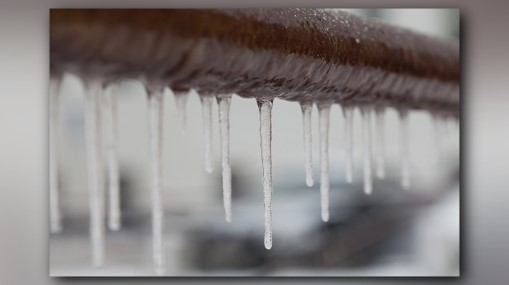Tips to Keep Your Pipes from Cold Weather Issues: Crucial Advice
Tips to Keep Your Pipes from Cold Weather Issues: Crucial Advice
Blog Article
What're your ideas about How To Avoid Freezing Pipes?

Cold weather can damage your pipes, specifically by freezing pipelines. Here's how to avoid it from occurring and what to do if it does.
Introduction
As temperature levels decrease, the danger of icy pipelines boosts, potentially causing expensive repair services and water damage. Comprehending how to prevent icy pipes is critical for property owners in cold climates.
Avoidance Tips
Protecting at risk pipes
Wrap pipes in insulation sleeves or use heat tape to safeguard them from freezing temperatures. Focus on pipelines in unheated or outside areas of the home.
Heating techniques
Maintain indoor spaces sufficiently heated, especially locations with plumbing. Open up cupboard doors to allow warm air to flow around pipelines under sinks.
Just how to determine icy pipelines
Try to find reduced water flow from taps, unusual smells or noises from pipes, and noticeable frost on subjected pipes.
Long-Term Solutions
Structural modifications
Take into consideration rerouting pipelines away from exterior walls or unheated areas. Include extra insulation to attic rooms, cellars, and crawl spaces.
Updating insulation
Buy high-quality insulation for pipelines, attic rooms, and walls. Proper insulation helps maintain regular temperature levels and decreases the risk of icy pipes.
Safeguarding Outdoor Pipes
Yard hose pipes and exterior faucets
Separate and drain pipes yard hose pipes prior to winter. Mount frost-proof faucets or cover outdoor faucets with shielded caps.
Comprehending Frozen Pipes
What creates pipes to ice up?
Pipelines freeze when exposed to temperature levels below 32 ° F (0 ° C) for extended durations. As water inside the pipes freezes, it increases, putting pressure on the pipeline wall surfaces and potentially triggering them to rupture.
Threats and problems
Icy pipelines can lead to supply of water disturbances, residential property damages, and pricey repair work. Ruptured pipelines can flood homes and cause extensive structural damages.
Indicators of Frozen Pipeline
Recognizing frozen pipes early can stop them from bursting.
What to Do If Your Pipes Freeze
Immediate activities to take
If you presume icy pipelines, maintain faucets available to eliminate stress as the ice melts. Make use of a hairdryer or towels taken in hot water to thaw pipes gradually.
Conclusion
Protecting against frozen pipes calls for positive procedures and quick responses. By comprehending the causes, signs, and safety nets, property owners can protect their pipes during cold weather.
5 Ways to Prevent Frozen Pipes
Drain Outdoor Faucets and Disconnect Hoses
First, close the shut-off valve that controls the flow of water in the pipe to your outdoor faucet. Then, head outside to disconnect and drain your hose and open the outdoor faucet to allow the water to completely drain out of the line. Turn off the faucet when done. Finally, head back to the shut-off valve and drain the remaining water inside the pipe into a bucket or container. Additionally, if you have a home irrigation system, you should consider hiring an expert to clear the system of water each year.
Insulate Pipes
One of the best and most cost-effective methods for preventing frozen water pipes is to wrap your pipes with insulation. This is especially important for areas in your home that aren’t exposed to heat, such as an attic. We suggest using foam sleeves, which can typically be found at your local hardware store.
Keep Heat Running at 65
Your pipes are located inside your walls, and the temperature there is much colder than the rest of the house. To prevent your pipes from freezing, The Insurance Information Institute suggests that you keep your home heated to at least 65 degrees, even when traveling. You may want to invest in smart devices that can keep an eye on the temperature in your home while you’re away.
Leave Water Dripping
Moving water — even a small trickle — can prevent ice from forming inside your pipes. When freezing temps are imminent, start a drip of water from all faucets that serve exposed pipes. Leaving a few faucets running will also help relieve pressure inside the pipes and help prevent a rupture if the water inside freezes.
Open Cupboard Doors
Warm your kitchen and bathroom pipes by opening cupboards and vanities. You should also leave your interior doors ajar to help warm air circulate evenly throughout your home.

I was shown that report about Helpful Tips to Prevent Frozen Pipes this Winter from a pal on our other blog. Sharing is nice. One never knows, you may be doing someone a favor. Thanks so much for your time spent reading it.
Booking Report this page